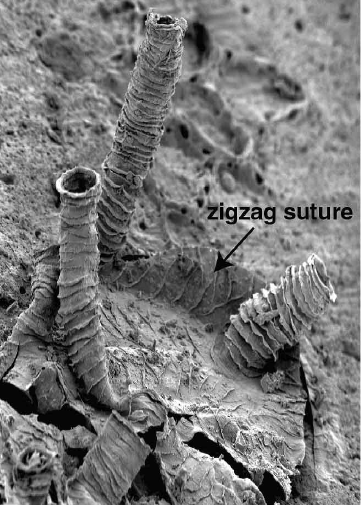|
Dendrograptidae
Dendrograptidae is an extinct family of graptolites. Genera List of genera from Maletz (2014): *†''Airograptus'' Ruedemann, 1916 *†''Aspidograptus'' Bulman, 1934 *? †''Cactograptus'' Ruedemann, 1908 *†''Callograptus'' Hall, 1865 *†''Calyxdendrum'' Kozłowski, 1960 *†''Capillograptus'' Bouček, 1957 *†''Dendrograptus'' Hall, 1858 *†''Denticulograptus'' Schmidt, 1939 *†''Desmograptus'' Hopkinson in Hopkinson & Lapworth, 1875 *†''Dictyonema (graptolite), Dictyonema'' Hall, 1851 *†''Graptolodendrum'' Kozłowski, 1966 *†''Licnograptus'' Ruedemann, 1947 *†''Odontocaulis'' Lapworth, 1881 *†''Ophigraptus'' Jaeger, 1992 *†''Ophiograptus'' Poulsen, 1937 *†''Pseudocallograptus'' Skevington, 1963 *†''Pseudodictyonema'' Bouček, 1957 *†''Ptilograptus'' Hall, 1865 *†''Ptiograptus'' Ruedemann, 1908 *†''Rhabdinopora'' (†''Dictyograptus'') Paškevičius, 2011 *†''Rhizograpsus'' Spencer, 1878 *? †''Ruedemannograptus'' Termier & Termier, 1948 *†''Stel ... [...More Info...] [...Related Items...] OR: [Wikipedia] [Google] [Baidu] |
Dictyonema (graptolite)
''Dictyonema'' is a genus of dendroid graptolites in the order Dendroidea. Fossil record Fossils of ''Dictyonema'' are found from the Upper Cambrian to the Devonian (age range: from 488.3 to 383.7 million years ago.). They are known from various localities in Europe, North America, South America, China and Morocco. Description These colonial organism are characterized by a conical, net-like structure. The colonies (known as rhabdosomes) are branched and may vary from almost discoidal to almost cylindrical. They were stationary planktonic suspension feeders. Species *†''Dictyonema macgillivrayi'' (Hall 1899) *†''Dictyonema pulchellum'' (Hall 1899) *†''Dictyonema retiforme'' (Hall 1843) Bibliography *Bulman, O. M. B. 1970. Graptolithina with sections of Enteropneusta and Pterobranchia. In Treatise on Invertebrate Paleontology The ''Treatise on Invertebrate Paleontology'' (or ''TIP'') published by the Geological Society of America and the University of Kansas Press, is ... [...More Info...] [...Related Items...] OR: [Wikipedia] [Google] [Baidu] |
Graptolites
Graptolites are a group of colonial animals, members of the subclass Graptolithina within the class Pterobranchia. These filter-feeding organisms are known chiefly from fossils found from the Middle Cambrian (Miaolingian, Wuliuan) through the Lower Carboniferous ( Mississippian). A possible early graptolite, ''Chaunograptus'', is known from the Middle Cambrian. Recent analyses have favored the idea that the living pterobranch ''Rhabdopleura'' represents an extant graptolite which diverged from the rest of the group in the Cambrian. Fossil graptolites and ''Rhabdopleura'' share a colony structure of interconnected zooids housed in organic tubes (theca) which have a basic structure of stacked half-rings (fuselli). Most extinct graptolites belong to two major orders: the bush-like sessile Dendroidea and the planktonic, free-floating Graptoloidea. These orders most likely evolved from encrusting pterobranchs similar to ''Rhabdopleura''. Due to their widespread abundance, plantkonic l ... [...More Info...] [...Related Items...] OR: [Wikipedia] [Google] [Baidu] |
Dendroidea
Graptolites are a group of colonial animals, members of the subclass Graptolithina within the class Pterobranchia. These filter-feeding organisms are known chiefly from fossils found from the Middle Cambrian ( Miaolingian, Wuliuan) through the Lower Carboniferous (Mississippian). A possible early graptolite, ''Chaunograptus'', is known from the Middle Cambrian. Recent analyses have favored the idea that the living pterobranch ''Rhabdopleura'' represents an extant graptolite which diverged from the rest of the group in the Cambrian. Fossil graptolites and ''Rhabdopleura'' share a colony structure of interconnected zooids housed in organic tubes (theca) which have a basic structure of stacked half-rings (fuselli). Most extinct graptolites belong to two major orders: the bush-like sessile Dendroidea and the planktonic, free-floating Graptoloidea. These orders most likely evolved from encrusting pterobranchs similar to ''Rhabdopleura''. Due to their widespread abundance, plantko ... [...More Info...] [...Related Items...] OR: [Wikipedia] [Google] [Baidu] |
Graptolite
Graptolites are a group of colonial animals, members of the subclass Graptolithina within the class Pterobranchia. These filter-feeding organisms are known chiefly from fossils found from the Middle Cambrian (Miaolingian, Wuliuan) through the Lower Carboniferous ( Mississippian). A possible early graptolite, ''Chaunograptus'', is known from the Middle Cambrian. Recent analyses have favored the idea that the living pterobranch ''Rhabdopleura'' represents an extant graptolite which diverged from the rest of the group in the Cambrian. Fossil graptolites and ''Rhabdopleura'' share a colony structure of interconnected zooids housed in organic tubes (theca) which have a basic structure of stacked half-rings (fuselli). Most extinct graptolites belong to two major orders: the bush-like sessile Dendroidea and the planktonic, free-floating Graptoloidea. These orders most likely evolved from encrusting pterobranchs similar to ''Rhabdopleura''. Due to their widespread abundance, plantkonic l ... [...More Info...] [...Related Items...] OR: [Wikipedia] [Google] [Baidu] |
Callograptus
''Callograptus'' is a genus of graptolites. References * Two species of the genus Callograptus Hall, 1865 (Graptolithina, Dendroidea) from the Lower Ordovician of Bohemia. Kraft J, Bulletin of Geosciences, volume 74, issue 1, pages 21–26 External links * * ''Callograptus elegans'' at biolib.cz Graptolite genera Dendroidea Paleozoic life of the Northwest Territories {{paleo-deuterostome-stub ... [...More Info...] [...Related Items...] OR: [Wikipedia] [Google] [Baidu] |
Rhabdinopora
''Rhabdinopora'' is a genus of graptolites belonging to the family Anisograptidae. It is the earliest planktic Plankton are the diverse collection of organisms found in water (or air) that are unable to propel themselves against a current (or wind). The individual organisms constituting plankton are called plankters. In the ocean, they provide a crucia ... graptolite and is presumably the ancestor of all later planktic graptoloids. Some species identified as the first planktid graptolite are: *'' Rhabdinopora proparabola'' *'' Rhabdinopora praeparabola'' *'' Rhabdinopora parabola'' *'' Rhabdinopora flabelliformis'' References Graptolite genera Ordovician animals of Asia Paleozoic life of Newfoundland and Labrador {{Paleo-deuterostome-stub ... [...More Info...] [...Related Items...] OR: [Wikipedia] [Google] [Baidu] |


